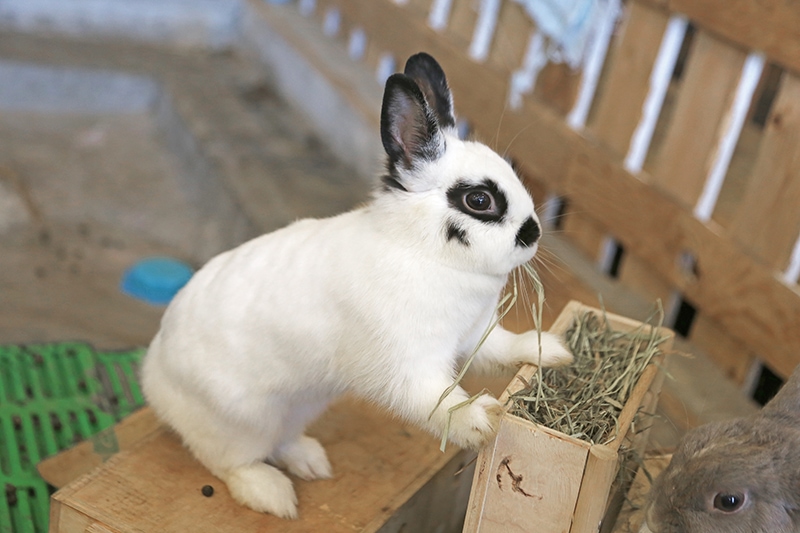Treating Heartworm in Cats: 11 Do’s and Don’ts (Vet Answer)
Updated on

Heartworm disease (HWD) in cats is caused by the same parasite responsible for the condition in dogs, Dirofilaria immitis. However, there are several essential differences between cats and dogs with HWD.
Cats are considered atypical hosts for this parasite and are inherently resistant to heartworm infection. As such, infection rates are generally much lower than that seen in dogs in endemic heartworm areas, but the disease is often more severe in cats.
An example of this increased severity is heartworm-associated respiratory disease (HARD). This results from pulmonary (or lung tissue) and pulmonary vasculature pathology, even if an infection never matures (i.e., without the presence of mature heartworms).
Clinical signs seen with HARD include coughing, wheezing, and dyspnea (difficulty breathing). Another feature of HWD in cats is that aberrant larvae migration appears more common than in dogs with HWD.
So, what should you do—or not do—for cats with HWD? Read on to find out:
The 8 Do’s of Treating Heartworm in Cats
1. Heartworm Prophylaxis/Preventives
The use of heartworm prophylaxis in cats has sparked some debate over the years, given that cats are atypical hosts and the incidence of disease in felines is low. However, it is widely accepted that cats living in heartworm-endemic areas should be given heartworm preventive therapy.
If you’re unsure if you live in a heartworm-endemic area, please talk to your local veterinarian. Various preventives are available, depending on geographic location. In the United States, there are five options for heartworm prophylaxis: eprinomectin/fipronil/praziquantel, imidacloprid-moxidectin, ivermectin, milbemycin-oxime, and selamectin.
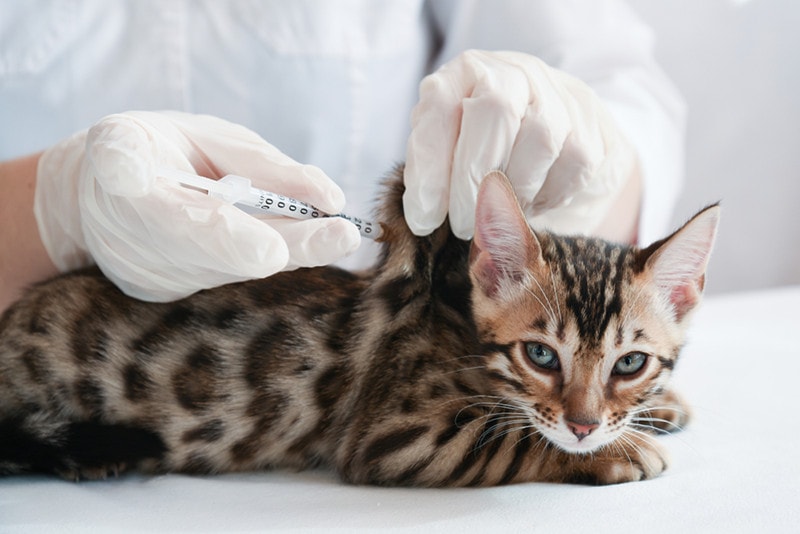
2. Bronchodilator Therapy
In principle, the use of bronchodilators makes sense in the management of feline HWD. Such drugs help manage bronchoconstriction (likely present with HWD) and can improve the function of already fatigued respiratory muscles.
While bronchodilators were not previously routinely incorporated into treatment protocols for HWD in cats, this practice appears to be changing. More and more clinicians are reaching for terbutaline or aminophylline to help alleviate respiratory signs in affected cats.
3. Antithrombotic Therapy
While some texts report antithrombotic therapy as controversial, particularly in combination with corticosteroids, it is becoming frequently incorporated into heartworm treatment protocols.
In the past, aspirin was the most used antithrombotic in cats; however, a recent study has shown that clopidogrel (an antiplatelet drug) is superior to aspirin with regards to antithrombotic properties, and as a result, despite currently a lack of studies looking at its use in heartworm cases in cats, clopidogrel is the more commonly utilized drug out of the two options.
4. Corticosteroids
Corticosteroids are helpful in an emergency and as part of chronic treatment protocols for managing respiratory signs in feline HWD. It is important to note that chronic use of these drugs in cats has been associated with the development of diabetes mellitus (DM). Thus, regular monitoring for clinical signs of DM (increased water intake, urination, and appetite) is essential.
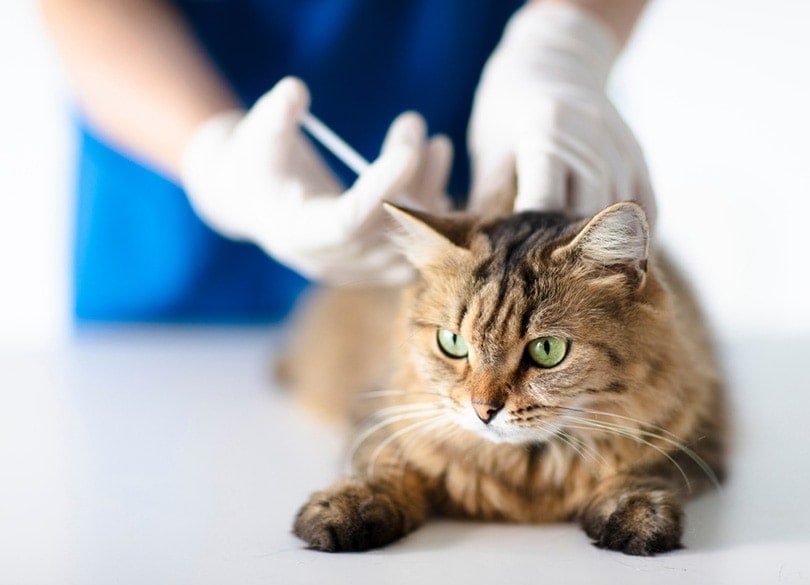
5. Cage Rest
As with dogs suffering from HWD, cage rest/restricted activity is generally advised to minimize the risk of thromboembolic disease and its associated complications.
6. Sildenafil (Case-By-Case)
Sildenafil is used to dilate pulmonary vessels and, in so doing, helps reduce pulmonary arterial pressure, which can be effective in managing pulmonary hypertension. Pulmonary hypertension can be a feature of congestive heart failure in cats with HWD. Thus, in these specific cases, sildenafil is a valuable addition to managing feline HWD cases.
7. Doxycycline
Doxycycline can be considered for the management of possible concurrent Wolbachia infection. Wolbachia pipientis is an important bacterium for Dirofilaria larval molting. However, it is crucial to recognize the risk of esophagitis associated with using doxycycline in cats, particularly the tablet form. So, it should be used cautiously and as instructed by your local veterinarian.
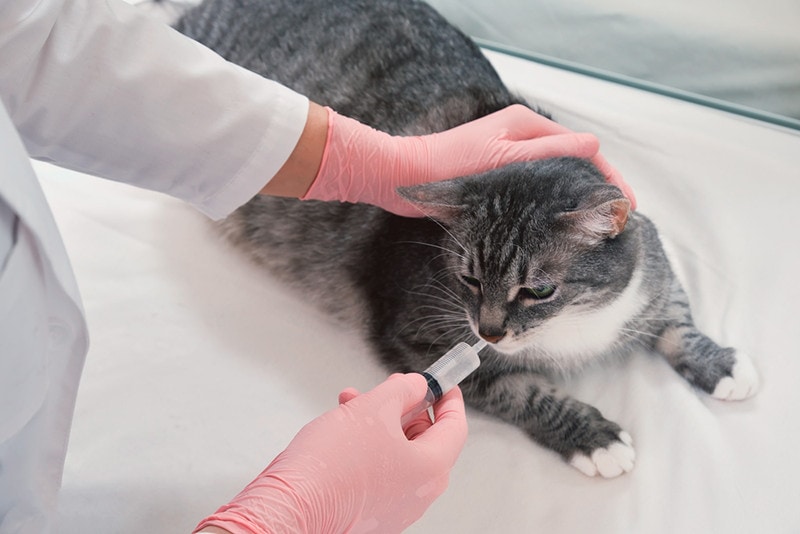
8. Oxygen Therapy (Emergency/Case-By-Case)
Particularly in an emergency setting with a cat demonstrating acute difficulty with breathing, oxygen therapy, either by placing the affected cat in an oxygen cage or using nasal insufflation (e.g., mask), is a crucial part of managing the respiratory signs in cats with HWD and should be done in a way that is the least stressful to the cat.
The 3 Don’ts of Treating Heartworm in Cats
1. Adulticidal Therapy
The consensus is that adulticidal treatment in cats with HWD is not recommended. Several reasons support such a statement: a significant risk for adverse reactions and treatment-related deaths with adulticidal therapy, an unclear benefit to treatment, and a recognized short life expectancy of heartworms in cats, possibly negating the need for such treatment altogether.
2. Microfilaricide Therapy
Most cats with HWD are amicrofilaremic—microfilariae are the first-stage larvae of Dirofilaria immitis produced following mating; thus, the term refers to an absence of these larvae in the majority of affected cats, as not all heartworm infections in cats mature.
As you can imagine, treating a cat for something unlikely to be present is, at best, controversial; however, it is also worth noting that microfilaricide therapies have also been associated with worsening respiratory signs in some cases and even respiratory failure and death in others.
Currently, no drug is approved by the FDA to eliminate microfilariae. Thus, in general, microfilaricide therapy is not recommended in cats. At most, treatment protocols include using macrocyclic lactones, such as ivermectin or selamectin mentioned above, as prophylactic therapy, instituted at the time of diagnosis of HWD in cats, which at these preventive dosages can have a slower kill rate if microfilariae are present.
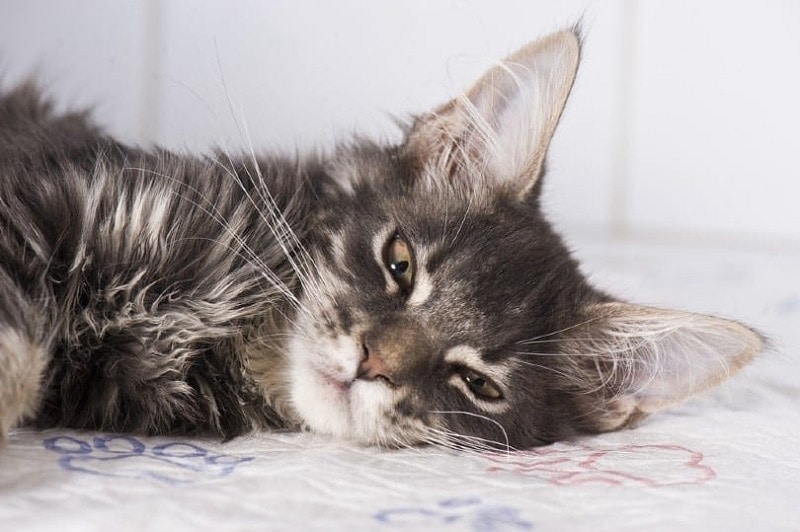
3. Surgical Removal of Heartworms (i.e., Worm Extraction)
In the past, based on a single case series where 2 of 5 cats that underwent worm extraction died, such treatment has typically been avoided. However, with less traumatic catheter devices (e.g., micro-snare/nitinol snare kits), better results have been achieved in a few cases.
Improved survival rates are believed to be due to a less profound anaphylactic response owing to reduced worm trauma. While such advancement is occasionally useful, it is, unfortunately, still quite impractical in most cases and is still considered a don’t in feline cases of HWD.
Prognosis
The prognosis is fair for cats not showing any clinical signs of HWD. In most of the clinical cases of feline HWD, the prognosis is guarded, except when concurrent acute respiratory distress syndrome (ARDS) is diagnosed, which is considered grave even with supportive treatment.
Conclusion
In summary, unlike the case with canine heartworm disease cases, the management of cats with HWD is centered on symptomatic and supportive therapy, not adulticidal therapy as in dogs. Symptomatic therapy typically includes corticosteroids, bronchodilators, antithrombotic therapy, and cage rest, amongst other treatments used on a case-by-case basis. Cats living in a heartworm-endemic area should be treated with appropriate heartworm prophylaxis, just as dogs should be treated.
Featured Image Credit By: brodtcast, Shutterstock






